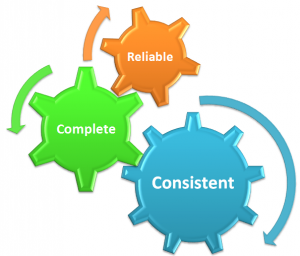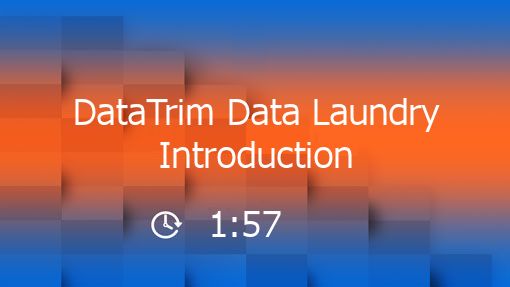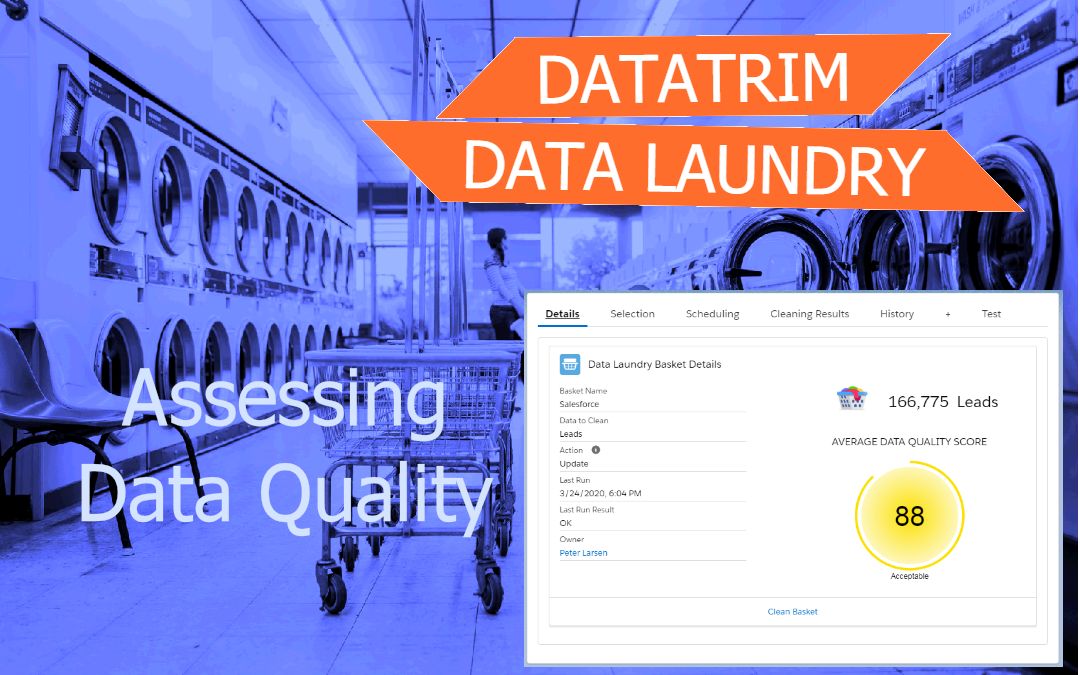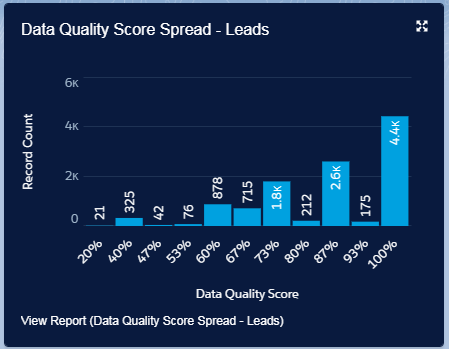In an ideal world your should have Reliable data.
Complete and Consistent.
But reality often shows that it is not.
Reliability – or your ability to base your business decision on your data

Every day we make decision based on the information our solutions hold about our clients and leads. These decisions might be:
-Simple autoreplies to enquiries on a website,
-Advanced workflow rules which will guide the lead to a purchase, or
-A human based decision, based on a client support request.
These decisions are based on stored numbers, events and historical data. But if this is not up to date, if the data is not consolidated, the numbers are not correct, and we do not have a full history of the events in the past. If we cannot rely on the data, how can we make the right decision.
Reliability gives predictability on reporting, forecasts, campaign outcomes etc.
It gives confidence in the next action to take in a work process.
It also drives user adoption and trust. And it all encourages more usage, leadership, progression and the willingness to take initiative, to go beyond.
Completeness – your ability to engage in a multi-channel, conversational communication
Completeness is to have enough information. Information which can be used to make your communication engaging, relevant and conversational.
DataTrim has been processing data from all over the world for more than 18 years. And our experience is that the “Empty” or “Default” value often is the most common field value.
We have seen that data enter into a database from multiple sources, often enter with different levels of completeness and accuracy. E.g. website registrations often provide limited amount of information (except for the email provided). Data from the order intake process mainly includes the billing and shipping address details. And Mailing lists contains an email, and not much more.
In order to personalize the communication, the email may be essential, agreed! But without: physical address, Geo-location, historical activities, purchases, interests etc. the communication will never become appealing.
Completeness or the lack of it should result in 2 initiatives:
- Implementation of processes which can consolidate the data and enrich the records from multiple sources, eventually combined with a data enrichment process.
- An exclusion of records with lacking information in the reports and decision making processes (workflows), eventually with an exception handling process for these data sets.
Consistency – your ability to get what you expect from your data
Consistency is the ability to compare data, segment, filter and categorize. We can all relate to a number, but is 1M in revenue good or bad? Well, it depends on what the number was last time under the same conditions. Without consistency you will not be able to compare apples against apples.
Your completeness report may show that your fields are well populated. But a simple report to e.g. extract leads from the UK, may be difficult when the country field is populated with: UK, England, United Kingdom, Scotland etc.
You could of cause implement validation processes on your data prior to importing it. It’s not a bad idea, but you cannot always force a data validation process on all your data entry points. It might as an example prevent a lot of web registrations from being submitted if the process of filling in date is too restricted.
Also, be careful as even pick-list fields in salesforce can be loaded with values not complying to the pick list values. This frequently happens if data is imported from data loading application, the APIs or other integrations.
Therefore: Consider implementing a process where you regularly scan your records. Do it on a regular schedule or after record creation (regardless of source). Make sure that you identify gaps and inconsistencies, so that you can apply correctional actions on these “dirty” records.
How to know which data is reliable?
In conclusion:
Having reliable data for your business decisions, heavily relies on the completeness and consistency of your data.
If one of these 2 elements aren’t present, your data will not be reliable. -And you should exclude the un-reliable data from your decision-making process.
You can use the DataTrim Data Laundry, not just as a tool to fix things when something is broken.
It is a concept and a suite of solutions and services. Built-in reports and dashboards use custom data quality metrics for scoring. With this, you can now decide where you want to focus your data cleaning efforts, and help you understand which of your existing data you can trust.
Learn More about Realiable data
Contact Us
Please do not hesitate to reach out to us, we are happy to discuss your needs, and see how our solution can address YOUR challenges.
DataTrim helps companies and organizations worldwide in improving and maintaining a high level of Data Quality.
The DataTrim Data Laundry improves the reliability completeness and consistency of your data by applying a set of data cleaning treatments which is called The Data Laundry.
DataTrim’s Solutions adds experience based data cleaning processes to lead management, marketing automation, customer support and account management processes in salesforce and create valuable impact on the day-to-day usage and productivity in a simple-to-use, collaborative and cost effective way.




